Jul 4, 2025
Streaming With Purpose on Pivot: a Community App Beyond the Live Moment
 Jennifer Simonazzi
Jennifer Simonazzi
Creators who want to build a community are currently facing a big problem. Once the camera shuts off, the chat thins out, and the host closes the window, what lingers isn’t the impact of the discussion but the absence of a structure that could have held it. Too often, the energy of a live event collapses into silence, leaving participants with nowhere to return, nothing to act on, and no thread connecting that moment to whatever comes next. Most community apps treat the live session, namely a large broadcast or a face-to-face video call, as a standalone occasion, a spike on a timeline, instead of the beginning of something sustained. But if the same exchange that made dozens of people type at once, raise hands, nod in agreement or challenge a point, had the architecture of a real community platform behind it, then a poll could evolve into a post, a comment could shape an initiative, and a chat could become a channel that doesn’t fade when the spotlight does.
Why Zoom Alternatives or Discord Alternatives Fall Short, and How a Community Platform Builds Real Continuity
You can gather a hundred people, deliver your sharpest point, and watch the chat fill with affirmation, but if the interface that carried it treats that moment as an ending rather than a thread worth weaving into something larger, the entire exchange dissolves almost immediately. Most community engagement tools and every generic Zoom or Discord alternative are built around isolated impact:
- a single screen
- a passing scroll
- an ephemeral list of attendees
They rarely offer scaffolding for what might follow, let alone a proper archive that makes participation compound over time. A compelling idea, once typed into the chat, slips out of sight the moment the host hits “end.” A reference link vanishes like a joke that landed too fast. A community app that fails to pull these interactions into continuity is missing its own purpose. That’s exactly the kind of absence Pivot was built to correct.
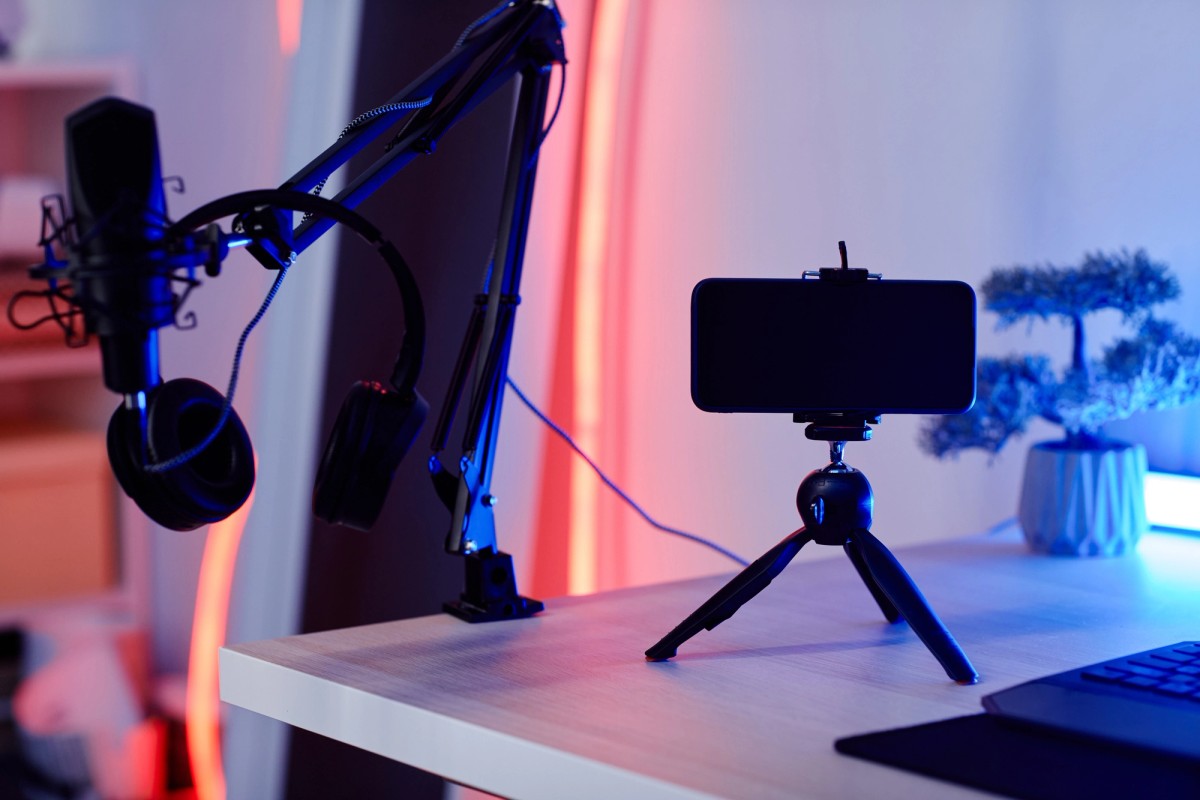
Streaming in a Community App: Beyond a Simple Broadcast
Pivot’s streaming rooms create the conditions for interaction to take shape before the broadcast begins and remain useful well after it’s over.
Before the session even starts:
- A visible countdown prepares attendees, not with noise, but with time to focus and get ready.
- Speaker requests can be sent in advance, so the host isn't caught choosing contributors mid-flow.
- Attendee previews give hosts a real sense of who’s watching, not just a number.
While live:
- A chat panel stays anchored to the session and doesn’t disappear once the call ends.
- Speakers are listed clearly, and new voices can be added on request without disruption.
- Sessions can be restreamed in real time to other rooms or platforms—without creating a second event.
Unlike many community engagement tools or async collaboration tools, this structure treats live participation as one part of the system instead of a separate event.
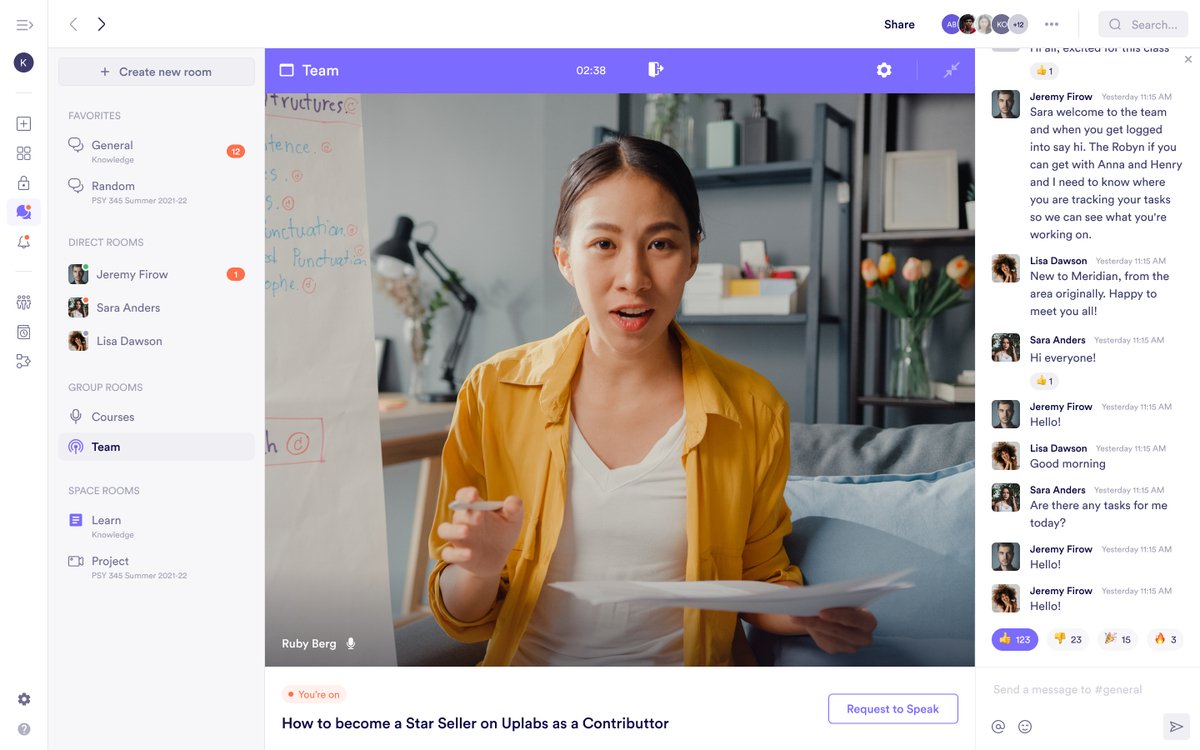
Video Rooms: Conversations That Shape Into Future Action
Video rooms in Pivot are not simply channels for fleeting dialogue but environments where discussions gain the weight of permanence, allowing a face-to-face exchange to linger, breathe, and seed new directions. It’s there that conversations unfold not as isolated events but as pieces of a much larger narrative that a community app aspires to sustain. In these rooms, the experience stretches beyond live presence:
- Chat remains visible alongside speakers, inviting thoughts to be captured without derailing the dialogue
- Participants can pin speakers to anchor the discussion visually and mentally
- Recordings house not just video but layered context—transcripts, chapters marking turning points, comments capturing insight in real time
- Clips carved from sessions become fragments to ignite future debates in async work, spark polls, or feed discussions into the rhythms of team collaboration app spaces
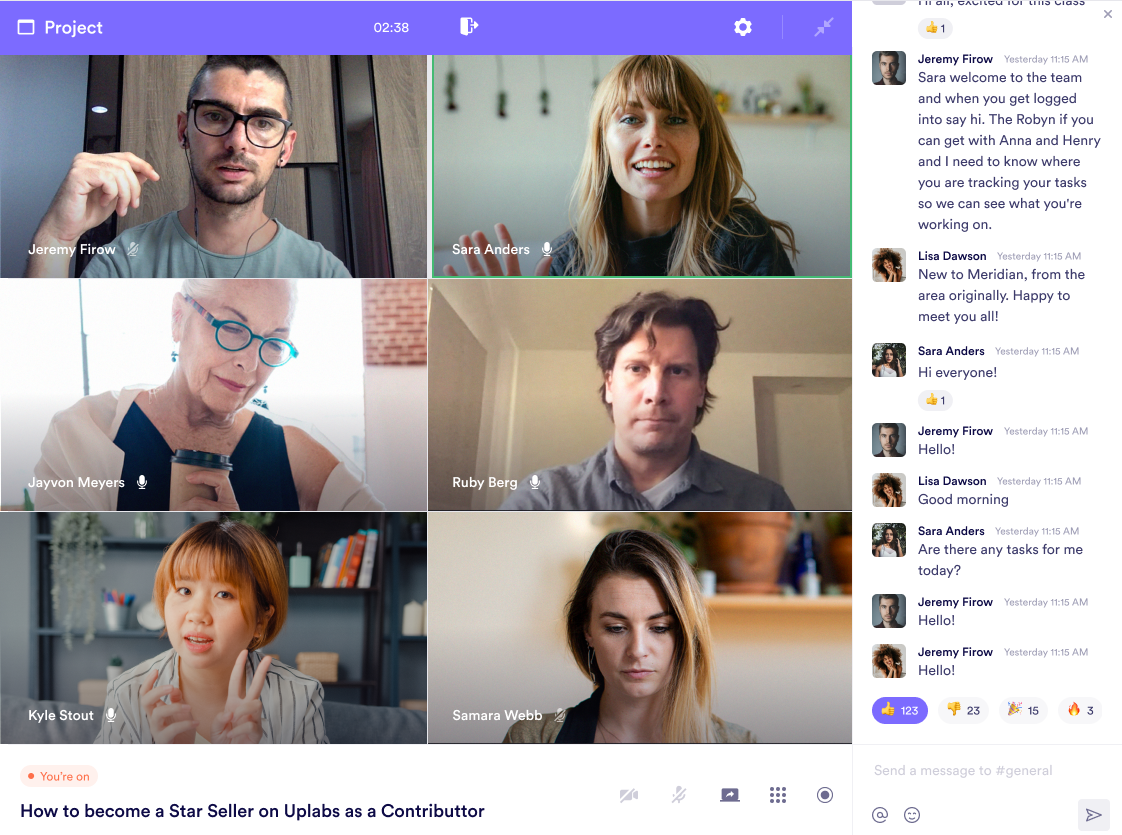
Here, a simple call becomes an ongoing influence, fueling the pulse of an enduring community.
How Our Community Platform Turns Streaming into Lasting Community Engagement
Live exchanges can branch into action by embedding themselves into the rhythm of ongoing participation.
Here’s how that plays out:
Post rooms
Each stream can lead directly into structured, topic-based discussions. Users can:
• Create posts with attachments, tags, and mentions
• React with emojis or comment to expand the thread
• Sort posts by date or activity
• Filter by author to track specific voices
Audio or video blocks can be added to each post room to extend the conversation beyond the written thread.
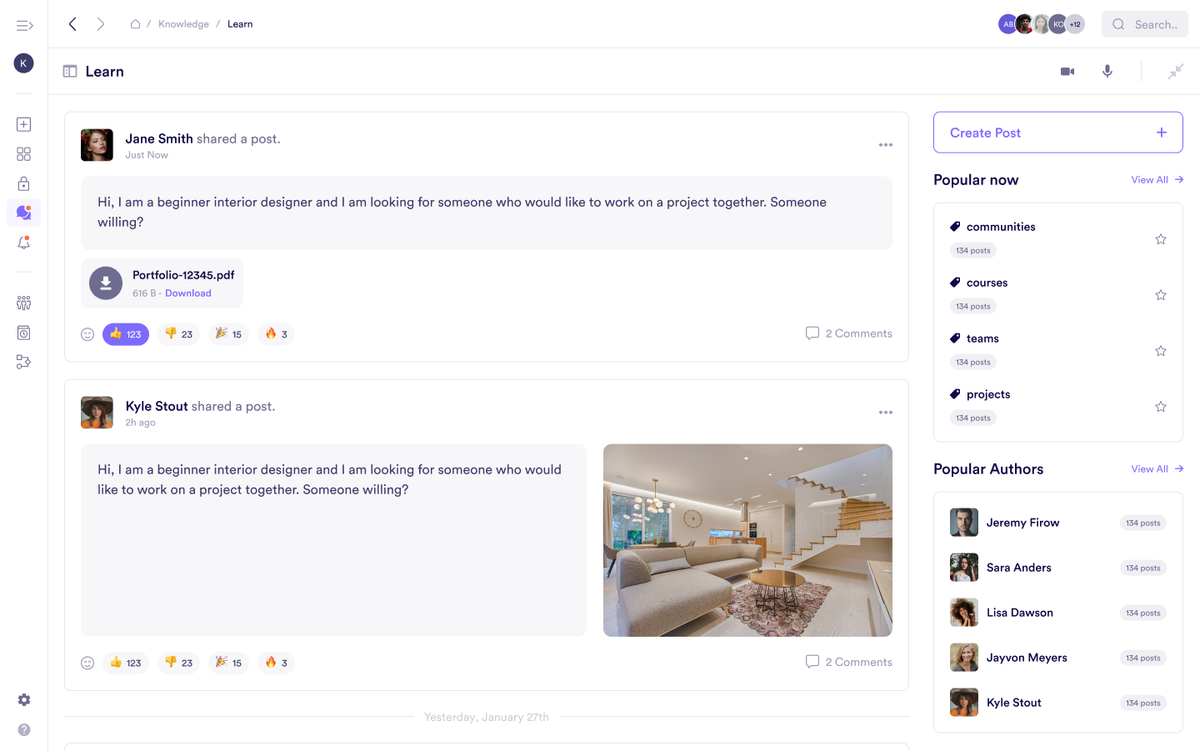
Polls
A poll can be added anywhere inside a post room to collect quick feedback or drive a decision. You can:
• Pose a question with up to 10 options
• Set a deadline for responses
• Make voting anonymous if needed
• View percentage results and total votes once submissions come in
This turns passive participation into directional input from the community itself.
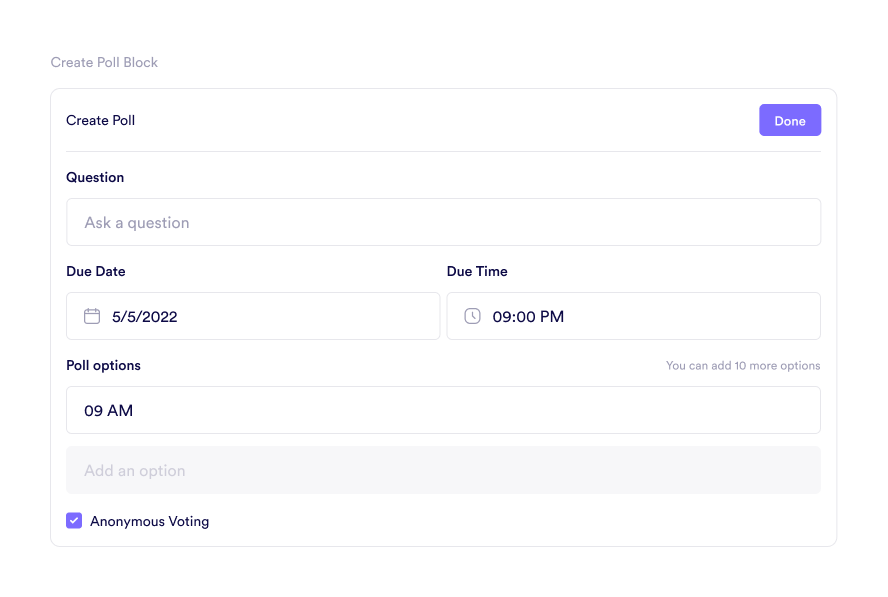
Room recordings
Every stream can be recorded and saved, with the session’s chat visible alongside it. Features include:
• Auto-generated transcripts with chapters
• The ability to comment on specific timestamps
• Tools to trim and clip recordings
• Sorting options to organize by date or relevance Hosts can also rename or hide recordings based on audience needs.
All of this gives a community builder the freedom to extend the life of a moment. You can take a 90-second clip from a stream where a guest says something divisive, or a critical moment from a video room. You post the excerpt in a post room, add a poll block just beneath it with the question: “Do you agree with this take?”, and watch as the replies start layering. A side thread emerges. Someone floats the idea of turning it into the next session’s theme. Something that small can turn into a spark that carries forward.
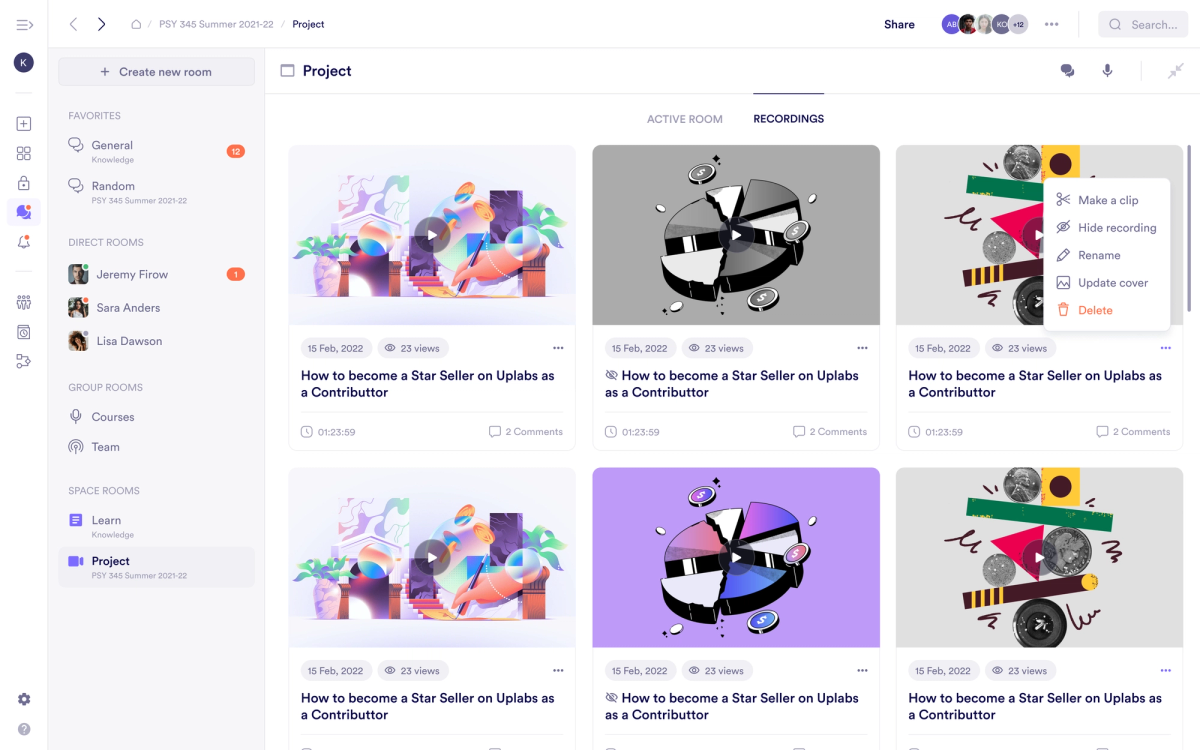
Leverage Community Engagement Tools That Give Your Members a Reason to Return
When sessions end, most platforms leave nothing behind: no searchable history, no path forward, no reason to stay. Conversations vanish, participation drops, and the community plateaus. Temporary presence is easy; lasting infrastructure is harder to find.
Pivot gives continuity to what would otherwise evaporate:
- Streaming rooms for live broadcasts where speakers present to an audience, with tools like live chat, speaker requests, and restreaming to other spaces or platforms.
- Video rooms where everyone can speak, collaborate face-to-face, share screens, use side-chat, and pin participants for focused discussions.
- Post rooms to continue the thread, organize by tag or author, and respond in kind.
- Polls to turn reactions into decisions.
- Recordings with comments, transcripts, and clips that feed future content.
A community app should make every session the start of something. If you're building a community, give it the system it needs to keep growing. Try Pivot HERE.

Jennifer Simonazzi
Content Writer
Share this post
Table of Contents
